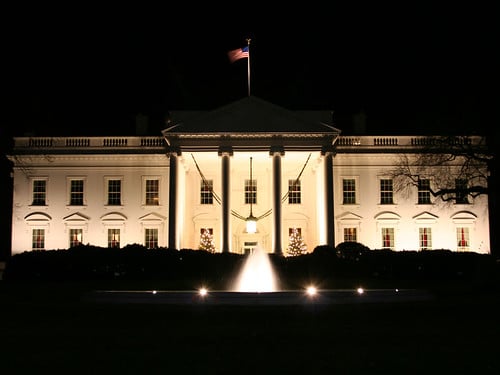Key Takeaways:
- A Wall Street Journal conservative board member slammed President Trump’s plan to demolish the East Wing.
- The president aims to build a massive ballroom where historic rooms once stood.
- Critics call the project an “astonishing fiasco” and warn it erases history.
- Many Republicans stayed silent as a key symbol of national heritage fell into rubble.
The White House Ballroom Under Fire
A member of the Wall Street Journal’s conservative board criticized the president’s move to tear down the East Wing. She called the White House ballroom project an “astonishing fiasco.” Without any public notice or formal approval, rooms that housed First Ladies and hosted military families now lie in pieces. The op-ed argues this act broke a promise to preserve American history.
Collin Levy, who joined the board in 2007, pointed out that conservatives rarely objected. In her view, the collapse of these rooms is more than a simple renovation. It is the destruction of a symbol of power and national identity. As she wrote, “A piece of American history lies in rubble.” In fact, she said no one tried to stop the president, and that silence is troubling.
While the president envisioned a grand ballroom for state events, the loss of the East Wing raises questions. Why replace a historic site with a new hall? Do modern needs outweigh the importance of heritage? These questions now echo in news reports and social media threads across the country.
Why the White House Ballroom Demolition Alarms Experts
Many historic preservationists warned that once you destroy old buildings, you lose a part of your national story. They argued the East Wing is more than walls; it is where First Ladies launched literacy drives and comforted military families. Some suggestions that the East Wing was “just for First Ladies” ignore decades of public service.
Moreover, critics say this project was rushed. No public hearings took place. No preservation board signed off on the design. As a result, experts now fear the new construction will lack the character and history of the old rooms. They worry future generations will never see the places where past leaders made key decisions.
Additionally, opponents see this as a test of our democracy. Levy pointed out that democratic rule depends on checks and balances. Yet when one branch of government acts alone, the nation risks losing its core values. Therefore, preserving history becomes a way to protect democracy itself.
Republican Silence Draws Criticism
Since news of the demolition spread, most Republican lawmakers stayed quiet. Many refrained from any public comment. Some even defended the move by saying modern functions need modern spaces. For example, a few argued state dinners require more room. They claimed the old East Wing was too small or outdated.
However, critics dismissed those arguments as weak. They say functionality does not trump heritage. Furthermore, they note state dinners were never held in the East Wing. Those events usually take place in the State Dining Room. This mismatch highlights how little some defenders know about White House layouts.
Meanwhile, many Republican donors and allies have not voiced concerns either. This absence of pushback puzzles historians and political watchers alike. After all, conservatives once led efforts to save the White House from similar changes. Today, those efforts seem forgotten.
Why Historic Preservation Matters
History lives in buildings, monuments, and documents. Each stone and room tells a story. When we erase these objects, we risk twisting our national memory. Future generations may never understand how past leaders lived and worked.
Furthermore, historic sites bring people together. They inspire pride, spark curiosity, and teach lessons. School groups visit the White House to see where presidents and First Ladies walked. Veterans tour the East Wing to recall military family events. Losing these halls means losing shared experiences.
Moreover, preserving old spaces does not block progress. Architects can blend modern needs with historic charm. Adaptive reuse projects around the world prove this point. By carefully updating rooms, we keep history alive and meet today’s demands.
What Comes Next for the White House Ballroom
Looking ahead, many states and local groups may step up. They could file suits or launch campaigns to halt further demolition. Some lawmakers might introduce bills to strengthen preservation rules. A public outcry could force the administration to rethink plans.
In fact, some former staffers and volunteers have already voiced their concerns. They hope to form a coalition that will lobby Congress. Their goal is clear: ensure no leader can erase key parts of the White House ever again.
Nevertheless, the future of the new ballroom remains uncertain. Will it rise as planned? Or will preservationists win a temporary halt? Only time will tell if this project becomes a symbol of progress or a cautionary tale.
Frequently Asked Questions
What exactly is being torn down at the White House?
The president ordered the demolition of the East Wing, a section of the White House long used for office space and public receptions. Now he plans to build a large ballroom in its place.
Why do critics call it an “astonishing fiasco”?
Critics see the project as reckless. They argue it destroys historic rooms without public notice or approval. They also fear the loss of national heritage and democratic oversight.
How did Republicans react to the demolition?
Most Republican lawmakers and donors stayed silent. A few defended the need for a new event space. Yet many did not address the concerns of preservation experts or historians.
Can historic buildings be updated without demolition?
Yes. Adaptive reuse projects allow old buildings to serve modern needs. Architects blend new functions with original features to retain history while adding value.

